Related Research Articles

Joseph Rudolph "Philly Joe" Jones was an American jazz drummer.

Tadley Ewing Peake Dameron was an American jazz composer, arranger, and pianist.

Benny Golson was an American bebop and hard bop jazz tenor saxophonist, composer, and arranger. He came to prominence with the big bands of Lionel Hampton and Dizzy Gillespie, more as a writer than a performer, before launching his solo career. Golson was known for co-founding and co-leading The Jazztet with trumpeter Art Farmer in 1959. From the late 1960s through the 1970s Golson was in demand as an arranger for film and television and thus was less active as a performer, but he and Farmer re-formed the Jazztet in 1982.

John Arnold Griffin III was an American jazz tenor saxophonist. Nicknamed "the Little Giant" for his short stature and forceful playing, Griffin's career began in the mid-1940s and continued until the month of his death. A pioneering figure in hard bop, Griffin recorded prolifically as a bandleader in addition to stints with pianist Thelonious Monk, drummer Art Blakey, in partnership with fellow tenor Eddie "Lockjaw" Davis and as a member of the Kenny Clarke/Francy Boland Big Band after he moved to Europe in the 1960s. In 1995, Griffin was awarded an Honorary Doctorate of Music from Berklee College of Music.
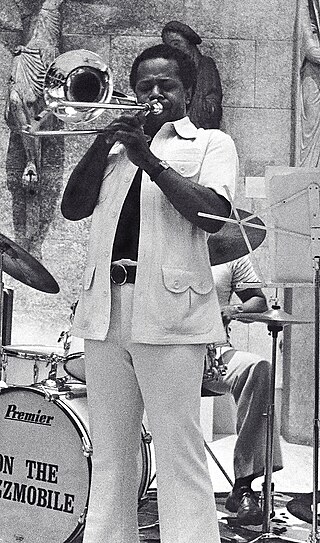
Locksley Wellington Hampton was an American jazz trombonist, composer and arranger. As his nickname implies, Hampton's main instrument was slide trombone, but he also occasionally played tuba and flugelhorn.

Charlie Rouse was an American hard bop tenor saxophonist and flautist. His career is marked by his collaboration with Thelonious Monk, which lasted for more than ten years.

Albert J. "Budd" Johnson III was an American jazz saxophonist and clarinetist who worked extensively with, among others, Ben Webster, Benny Goodman, Big Joe Turner, Coleman Hawkins, Dizzy Gillespie, Duke Ellington, Quincy Jones, Count Basie, Billie Holiday and, especially, Earl Hines.
Britt Woodman was an American jazz trombonist.

Samuel Jones was an American jazz double bassist, cellist, and composer.
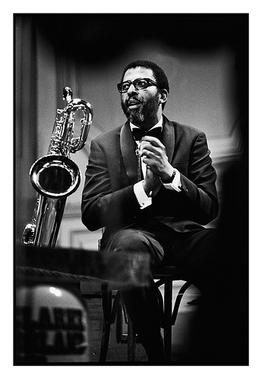
Sahib Shihab was an American jazz and hard bop saxophonist and flautist. He variously worked with Luther Henderson, Thelonious Monk, Fletcher Henderson, Tadd Dameron, Dizzy Gillespie, Kenny Clarke, John Coltrane and Quincy Jones among others.

Charles Lawrence Persip, known as Charli Persip and formerly as Charlie Persip, was an American jazz drummer.

Ernie Henry was an American jazz saxophonist.

Something Old, Something New is a studio album by Dizzy Gillespie, recorded and released in 1963.
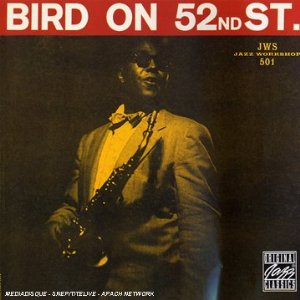
Bird on 52nd St. is a live album by the saxophonist Charlie Parker. It was recorded in July 1948 at the Onyx Club on a non-professional tape recorder by trombonist Jimmy Knepper, a fan of Parker who also made the recording released as Bird at St. Nick's. It was first released in 1957 on Charles Mingus' Jazz Workshop label as JWS 501. Several tracks are incomplete; Knepper was focused on capturing Parker's solos to conserve audiotape. AllMusic reviewer Scott Yanow wrote that Parker "plays quite brilliantly on this live set", but because of seriously deficient sound quality which "sometimes borders on the unlistenable" the album can be considered as being "for true Charlie Parker completists only."

Birks' Works is an album by trumpeter Dizzy Gillespie recorded in 1957 and released on the Verve label. The original album featured 10 tracks and was reissued as Birks Works: The Verve Big Band Sessions, a 2 CD compilation featuring unreleased tracks, alternate takes and tracks from Gillespie's previous 1956 albums Dizzy in Greece and World Statesman.

Dizzy Digs Paris is a compilation album by trumpeter Dizzy Gillespie and his band featuring concert and studio performances recorded in Paris in 1953 and originally released on the French Disques Vogue and Blue Star labels. Many of the tracks were first released as 78 rpm records but were later released on albums including Dizzy Over Paris (Roost) and Dizzy Gillespie and His Operatic Strings Orchestra (Fontana). The album also includes eight tracks recorded by Dizzy's rhythm section led by Wade Legge but without Gillespie that were originally released on a 10" album.

The Complete RCA Victor Recordings is a 1995 compilation 2-CD set of sessions led by Jazz trumpeter and composer Dizzy Gillespie recorded for the RCA Victor label between 1937 and 1949.

The Great Session is an album led by pianist Duke Jordan recorded in 1978 and released on the Danish SteepleChase label in 1981.
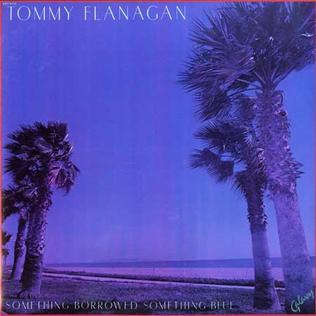
Something Borrowed, Something Blue is an album by pianist Tommy Flanagan. It was recorded in 1978 for the Galaxy label.
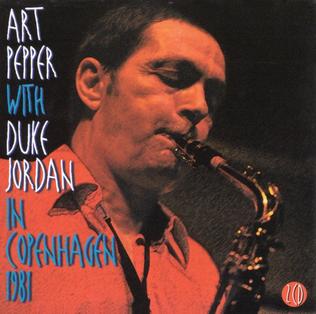
Art Pepper with Duke Jordan in Copenhagen 1981 is a live album by saxophonist Art Pepper and pianist Duke Jordan recorded in 1981 at the Jazzhus Montmartre by Danmarks Radio and released on the Galaxy label as a double CD in 1996.
References
- ↑ Aebersold, Jamey (1995). Jamey Aebersold Play-A-Long - Volume 65 - Four And More. Jamey Aebersold Jazz Inc. pp. ii.
- ↑ Levine, Mark (1995). The Jazz theory Book . Sher Music Co. pp. 413, 427. ISBN 9781883217044.